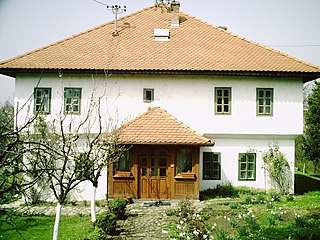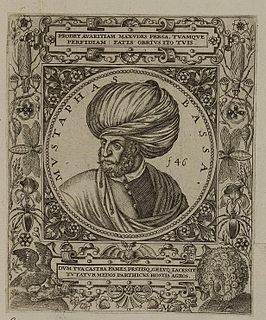 W
WHusein Gradaščević was a Bosniak military commander who later led a rebellion against the Ottoman government, seeking autonomy for Bosnia. Born into a Muslim Bosniak noble family, Gradaščević became the captain of Gradačac in the early 1820s, succeeding his relatives at the position. He grew up surrounded by a political climate of turmoil in the western reaches of the Ottoman Empire. With the Russo-Turkish war (1828–29), Gradaščević's importance rose; the Bosnian governor gave him the task of mobilizing an army between the Drina and Vrbas. By 1830, Gradaščević became the spokesperson of all Ottoman captains in Bosnia, and coordinated the defense in light of a possible Serbian invasion. Sparked by Ottoman Sultan Mahmud II's reforms that abolished the Janissaries and weakened the privileges of the nobility, and the autonomy and territory granted to the Principality of Serbia, much of the Bosnian nobility united and revolted. Gradaščević was chosen as the leader, and claimed the title of Vizier. This uprising, with goals of autonomy, lasted three years and included termination of Ottoman loyals mainly in Herzegovina. Among notable accomplishments, Gradaščević led forces victorious against the Ottoman field marshal in Kosovo. The uprising failed, while all captaincies were abolished by 1835. Temporarily exiled in Austria, he negotiated his return with the Sultan and was allowed to enter all of the Ottoman Empire except Bosnia. He died under controversial circumstances in 1834 and was buried in the Eyüp Cemetery in Istanbul.
 W
WOsman Gradaščević or Captain Osman (Osman-kapetan) was an Ottoman Bosnian captain of the military captaincy of Gradačac, which he was in control of since 1765. During his rule he was one of the most powerful and richest captains in Bosnia. He was responsible for the construction of the White mosque in Modriča along with a nearby travelers inn, another mosque, and a madrassa with a fountain in Gračanica, as well as another madrassa in Gradačac. In 1808 he also carried on with the previously started renovation of the family castle in Gradačac.
 W
WSalih Vilajetović, known as Hadži Lojo was a Bosniak leader in Sarajevo in the 1870s.
 W
WIshak Bey or Ishak-Beg was an Ottoman governor and soldier, the sanjakbey of Üsküb from 1415 to 1439.
 W
WLala Mustafa Pasha, also known by the additional epithet Kara, was an Ottoman and Bosnian general and Grand Vizier from the Sanjak of Bosnia.
 W
WAhmad Pasha al-Jazzar was the Acre-based Ottoman Bosnian governor of Sidon from 1776 until his death in 1804. During this period, he also simultaneously served four terms as the governor of Damascus, a total of nine years.
 W
WSarı Süleyman Paşa was an Albanian Ottoman grand vizier of the Ottoman Empire from 18 November 1685 to 18 September 1687. He was executed after the defeat of the Ottoman forces in the Battle of Mohács (1687).
 W
WKanijeli Siyavuş Pasha was an Ottoman statesman from the Sanjak of Bosnia. He was Grand Vizier between 24 December 1582 and 28 July 1584, 15 April 1586 and 2 April 1589, and 4 April 1592 and 28 January 1593. He was from Kanizsa in modern-day Hungary, then part of first the Sanjak and then the Eyalet of Bosnia. He was married to Fatma Sultan, daughter of Selim II.
 W
WSmail-aga Čengić was an Ottoman Bosnian lord and general in the Ottoman Army. In 1831–32, Čengić was one of the Ottoman generals that fought against Husein Gradaščević, who was leading a rebellion in Bosnia against the central Ottoman government.
 W
WMuhamed Hevaji Uskufi Bosnevi was a Bosniak poet and writer who used the Arebica script.